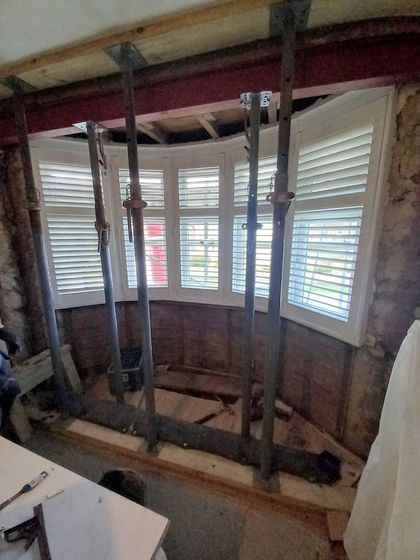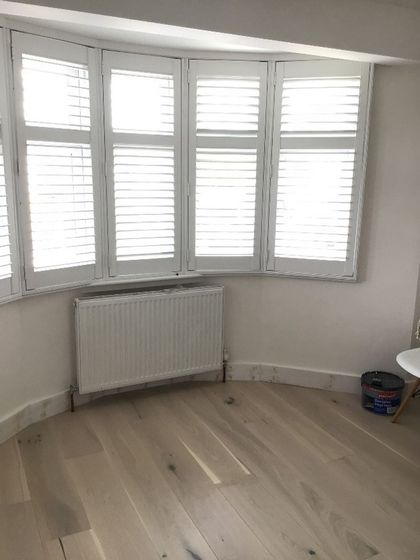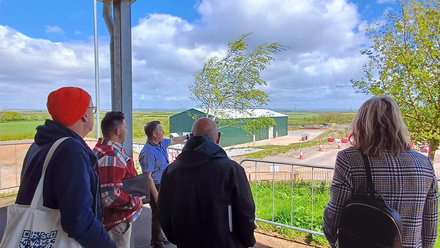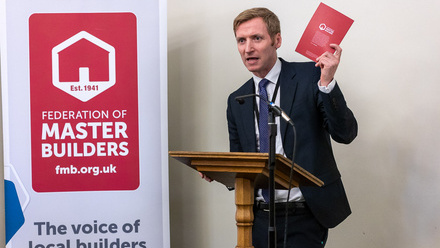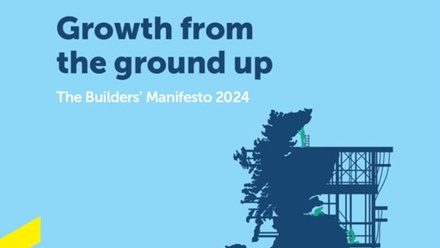Retrofit and energy efficiency continue to be important issues for FMB members and the public alike as we look to reduce carbon emissions from housing and achieve net zero emissions by 2050. Research commissioned by the FMB in 2021 showed that there are 29 million homes which are considered to have generally poor energy efficiency and FMB members involved with Repair, Maintenance and Improvement (RMI) play a key role in helping reduce this number.
FMB South Director, Iain Kirtley, spoke with Nikki Lambert from Lambert Home Builds to hear more about their work in the retrofit and energy efficiency market, what they’ve learnt along the way and their advice for other FMB members who may be looking to undertake similar work.
Question: What are the main reasons why making our homes greener is important to you?
Sustainable construction is more important than ever to us at Lambert Home Builds both from a personal perspective and a global perspective given the climate emergency, which means that it is important we all do our part if we want to keep our planet for the next generation. There are also economic impacts due to the rising costs of living that affect us all and making our homes “greener” means that they are more energy efficient, lose less heat and cost less to run.
But we also need to consider the carbon impact of the materials we use, the whole life cycle carbon is another factor that means that what we put into our homes can have a huge impact on carbon emission and global warming potential for many years to come.
Question: How did you get involved with energy efficiency and retrofit?
Many years ago we converted a listed outbuilding into a dwelling. To preserve the historical integrity of the building so we gradually rebuilt the building retaining as much of the original materials as we could and applied wood fibre sarking boards as external insulation and plenty of lime putty.
This project introduced to us the benefits of natural materials and a few years later when we were introduced to an enterprise running in Oxfordshire called Cosy Homes that were offering whole house retrofit services to homeowners and were looking for contractors to join them we eagerly signed up as we knew we could make a difference with retrofit.
Question: With an increased awareness of sustainability, are you finding that clients are more interested in incorporating aspects into their projects?
Yes definitely, for some clients the environment is an important driver in their decision making, for others it’s the rising costs of living and a desire to make improvements however we have found that although homeowners want to make changes they don’t know how or who to turn to.
Working closely with clients we can discuss the options with them and introduce them to the benefits of using natural fibre materials in their home. This can not only benefit from a climate point of view but their homes will be warmer and healthier places to be.
Question: How do you work with your clients to include sustainability into the projects?
We have some clients will come directly to us as we have experience in sustainable construction, but for others it’s an entirely new concept and they have very little knowledge of the area. We try to introduce the concept of natural fibre materials early on in any discussions and if they show interest we work with them to see if we can incorporate a more sustainable approach to their works. Often people just don’t realise that something as simple as wood fibre insulation is even an option.
We also work with a number of local architects that have specific interest in environmental responsibility and Passivhaus design, it’s fantastic to work with other like-minded individuals who are trying to drive change in an industry that is often very target driven by building regulations and U-Values without consideration to carbon impact or environmental impact.
Question: Do you have any examples of the types of products / initiatives you’ve included in projects?
We recently created a garden room for a client using wood fibre insulation within the timber frame studs and used Clayboards as an alternative to standard plasterboard coated with lime plaster. This specification has resulted in warm comfortable space with a much more stable internal environment partly due to the long decrement delay of the wood fibre and the added thermal mass of the very heavy Clayboards. When the outside temperature has dropped down to 8 degrees overnight the internal temperature inside is still 20 degrees first thing in the morning.
Another product we have gained experience with is Diathonite, a cork-based lime plaster that can be used both internally and externally. It is sustainable, breathable, capillary active and with a good thermal conductivity of 0.037 w/m.K. It’s a wonderful product to use in those traditional solid wall houses that are hard to heat. In one example where we used it as part of a whole house retrofit Diathonite internal wall insulation (IWI) as applied to a depth of 50mm to the external walls of a traditional 150-year-old stone cottage. The owner was extremely happy with the results and was particularly keen to use a natural product that also preserved the breathability of the stone walls.
Another client, after we had done a loft conversion to his 1920s house, came to us about his bedroom that was extremely cold in the winter and had mould on the wall by the bay window and wondered if we could do anything to improve things. When we investigated the wall under the bay window, we found it was single skin, brick on edge – no wonder it was cold! In this instance we applied Diathonite again to the internal wall and appropriate airtightness measures to the window areas resulting in a much less cold, draughty and mould free room.
Question: What advice would you give to other FMB members who are considering undertaking retrofit / energy efficiency projects?
If you are keen to learn and upskill and have a keen eye for detail then we would without doubt recommend undertaking retrofit in your work.
Be prepared to work outside of your comfort zone if for example you have never used a certain material, but that’s not a reason to not want to do something.
It is very important to familiarise yourself with the language of retrofit and there are a lots of resources but an understanding of the retrofit process, building pathology and moisture risk management is vital. Have an understanding of PAS 2035 and how you may fit into the process, we work with a retrofit service that involves dealing with other professionals in the retrofit industry who are very informative and knowledgeable.
It can be challenging work and time consuming, as you are often dealing with old houses that have had lots of work done in the past and you just never know what you are going to find. But if you enjoy attention to detail and working with a fantastic range of materials then retrofit may be for you.
As a business we have gone on to acquire a number of qualifications in the retrofit industry including the Association for the Environment Conscious Building (AECB)’s Carbonlite course and qualified as Retrofit Assessors, these are by no means compulsory but we felt really complemented our business decisions.
Question: Are there any barriers you’ve experienced regarding retrofit and energy efficiency?
Unfortunately, there are still many barriers to retrofit within the construction industry. It can be difficult to acquire the necessary skills and as the relevant courses may not be local, they need to be funded, and there is still a perception amongst other professionals in the industry that natural materials are not mainstream products and are either not specified or more difficult to obtain.
You may need to look further than your local builders’ merchants for the right insulation products, although having said that the suppliers are usually very knowledgeable and offer great technical support.
Building regulations are not really geared towards sustainable construction which can make compliance more difficult to achieve but the industry as a whole needs to be more informed about whole life carbon. There are some issues with public perception of retrofit partly due to poorly executed measures done in the past so education is vital in this area.
Question: How has your work around sustainability influenced you personally?
We have learned so much from our journey in retrofit, it has only encouraged us to meet other like-minded individuals and it has been a pleasure working with pioneers of the retrofit industry. We have become more involved with our local community and at grass roots level have seen what community groups are doing to preserve the environment and have become involved as volunteers with projects such as community thermal imaging.
Question: Are there any other benefits that being involved with retrofit made to your business?
Without a doubt we have increased our skills and knowledge base, working on traditional, older properties means that it is vital to have an understanding of building physics and moisture movement in ways that are so different to modern construction.
We have become more involved with the training of the next generation of tradesperson in green construction skills, a new Net Zero skills hub has just been launched locally which we have shared our experience with and offer our support to.
We have also been able to form collaborations with new partners and organisations all working towards a net zero future.
If we can make a change, however small, towards this climate emergency then it is worth it.


